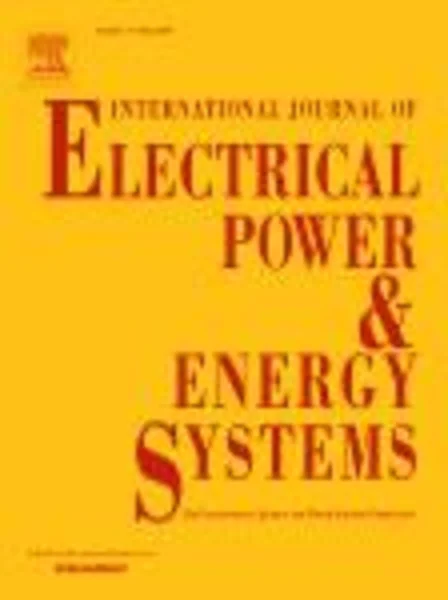-
three-phase unbalance of distribution systems: complementary analysis and experimental case study
جزئیات بیشتر مقاله- تاریخ ارائه: 1393/01/01
- تاریخ انتشار در تی پی بین: 1393/01/01
- تعداد بازدید: 630
- تعداد پرسش و پاسخ ها: 0
- شماره تماس دبیرخانه رویداد: -
three-phase unbalance is a familiar issue for power system researchers and engineers. this can introduce additional power losses in distribution network in steady states due to both negative and zero sequence components. it could also limit the loading capability of distribution transformers, well below their nominal ratings. there are many voltage and current unbalance definitions (e.g., ieee and nema) for three-phase three-wire systems, assuming zero sequence currents to be of negligible practical value, for they cannot flow in three-wire systems. however, the zero sequence unbalance has significant current magnitude in three-phase with four-wire distribution networks, particularly in developing countries. hence, this paper concentrates on the distribution unbalance, completing the available definitions in order to maintain tangible relationships between the level of unbalance and the cited consequences in distribution networks. furthermore, practical works were performed on 11 selected 20 kv/0.4 kv substations within tehran north-west distribution system (tnwds), where data loggers have been installed for 7 days to measure and record operating conditions of substations. then, detailed analysis and assessment are suggested on empirical data to substantiate the presented complementary definitions and relationships.
مقالات جدیدترین رویدادها
-
استفاده از تحلیل اهمیت-عملکرد در ارائه الگوی مدیریت خلاقیت سازمانی و ارائه راهکار جهت بهبود
-
بررسی تاثیر ارزش وجوه نقد مازاد بر ساختار سرمایه شرکت های پذیرفته شده در بورس اوراق بهادار تهران
-
بررسی تأثیر سطح افشای ریسک بر قرارداد بدهی شرکت های پذیرفته شده در بورس اوراق بهادار تهران
-
بررسی تأثیر رتبه بندی اعتباری مبتنی بر مدل امتیاز بازار نوظهور بر نقد شوندگی سهام با تأکید بر خصوصی سازی شرکت ها
-
تأثیر آمیخته بازاریابی پوشاک ایرانی بر تصویر ذهنی مشتری پوشاک ایرانی (هاکوپیان)
-
طراحی یک سیستم اتوماتیک مبتنی بر تشخیص و خواندن دقیق پلاک فارسی خودروها
-
توسعه پایدار در معماری بازارهای سنتی (مطالعه موردی: بازار سنتی کرمانشاه)
-
اثر پروبیوتیک، پری بیوتیک و سین بیوتیک بر پاسخ ایمنی همورال جوجه های گوشتی
-
اثر اندازه ساچمه بر عملیات مکانیکی تدریجی سطحی در فولاد زنگ نزن آستنیتی
-
transient and steady-state nanoindentation creep of polymeric materials
مقالات جدیدترین ژورنال ها
-
مدیریت و بررسی افسردگی دانش آموزان دختر مقطع متوسطه دوم در دروان کرونا در شهرستان دزفول
-
مدیریت و بررسی خرد سیاسی در اندیشه ی فردوسی در ادب ایران
-
واکاوی و مدیریت توصیفی قلمدان(جاکلیدی)ضریح در موزه آستان قدس رضوی
-
بررسی تاثیر خلاقیت، دانش و انگیزه کارکنان بر پیشنهادات نوآورانه کارکنان ( مورد مطالعه: هتل های 3 و 4 ستاره استان کرمان)
-
بررسی تاثیر کیفیت سیستم های اطلاعاتی بر تصمیم گیری موفق در شرکتهای تولیدی استان اصفهان (مورد مطالعه: مدیران شرکتهای تولیدی استان اصفهان)
-
کاهش اثرات مخرب زیست محیطی در طراحی داخلی اماکن تجاری ایران
-
بررسی و تحلیل نقدهای فمینیستی ادبیات کودک و نوجوان در نشریه تخصصی کتاب ماه کودک و نوجوان (1376-1393)
-
طراحی رویداد در فضاهای شهری با رویکرد به مکان سازی خلاق
-
phytochemical screening and antibacterial activity of the ethanolic stem bark extract of eucalyptus camaldulensis
-
earning management, corporate governance and corporate social responsibility disclosure: evidence from indonesia




سوال خود را در مورد این مقاله مطرح نمایید :